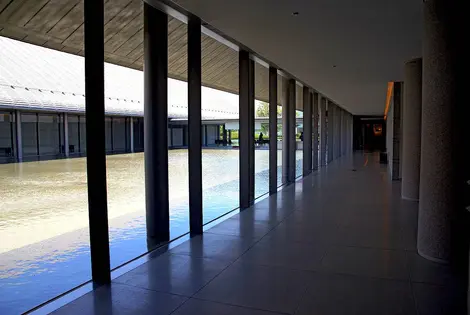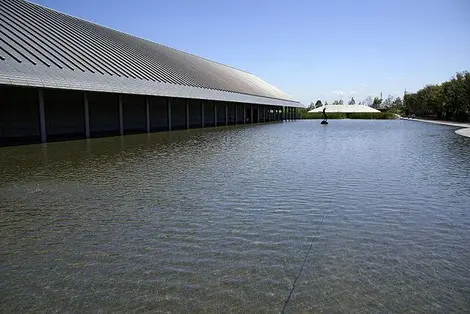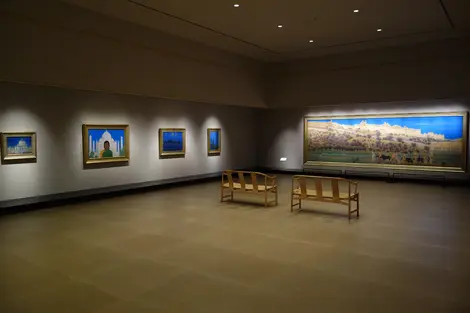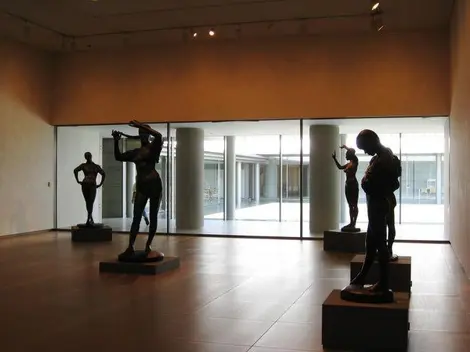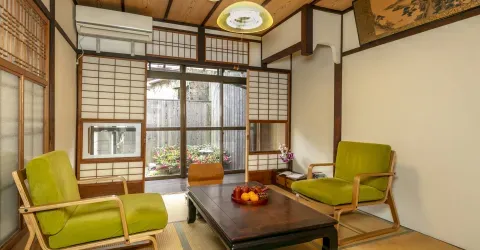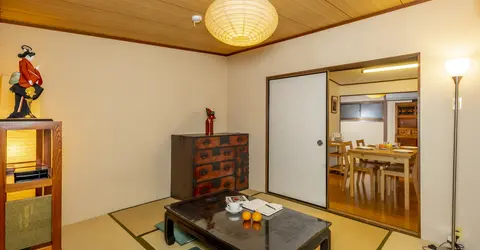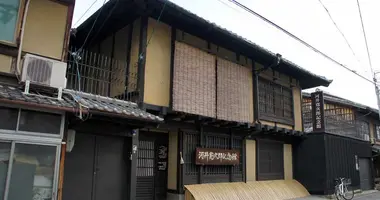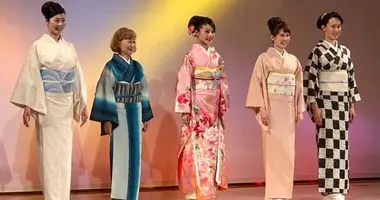Sagawa Art Museum 佐川美術館
- Published on : 29/08/2018
- by : J.R.
- Youtube
Lakeside culture
In Moriyama, on the shores of Lake Biwa, Sagawa Art Museum displays works by Japanese artists at the crossroads of East and West, including ceramics and bronze sculptures.
Sagawa Art Museum was opened in 1998 in the small town of Moriyama, in the heart of Shiga Prefecture. Not far from Kyoto, the museum is easily accessible by train. It takes its name from the transport company that financed the museum's construction, the Sagawa Express.
Unique Architecture
The museum is a work of art in itself: seeming to float on water, two long buildings stand on pillars. Pools filled with just a few inches of water, surround the buildings that house the artwork. Their placid waters reflect the different states of the sky and lend themselves well to contemplation...
The whole museum keeps to gray tones, for a very natural and particularly refined atmosphere. Here you'll find the codes of Zen Buddhism, and the attraction for the stripping down of modern Japanese architecture. You can walk freely between the different areas of the museum, the open rooms merge with each other and with the outside space, so that the pools and water are never far away. Finally, a third small building houses a tea house with a tatami floor and a corridor with a rough stone floor.
The collections
The museum is centered around three techniques, and presents the works of three Japanese artists, who together embody the very spirit of Japanese art. These three artists are the painter Hirayama Ikuo, the sculptor Sato Churyo, and the ceramist Raku Kichizaemon.
The first rooms invite visitors to discover the work of Hirayama Ikuo (1930-2009) through his paintings. Awarded the French Legion of Honor in 1996, he was very committed to nuclear disarmament. Indeed, born in Hiroshima, he was 15 years old during the nuclear attack. This committed artist is distinguished by his realistic style, and is well known for his series of paintings on the theme of the Silk Road.
To read : Zen painting
The sculptor Sato Churyo (1912-2011) worked with bronze. His favorite themes were the female body, as well as children. He was particularly inspired by the French sculptor Aristide Maillol. The second part of the museum, entitled "Bronze Poetry" displays 40 of his pieces, selected from the hundred that the museum owns.
Finally, the last building is dedicated to the works of ceramist Raku Kichizaemon, born in 1949. This artist specializes in Japanese Raku ceramics, a traditional art. Originating in the sixteenth century in Kyoto, Raku ceramics are distinguished by their raw and imperfect, almost austere appearance, as well as their metallic highlights. Linked to the tea ceremony, it illustrates one of the aesthetic concepts of Zen: wabi-sabi.
To read more : Buying ceramics in Japan
The museum also regularly organizes temporary exhibitions to highlight other famous Japanese artists of the twentieth century.
The Sagawa Museum also houses a particularly unique piece: a bronze temple bell, more than a meter high, dating from the year 858 and coming from Kyoto. Engraved with 24 kanji, it is registered as National Treasure.
The museum also has a shop as well as a cafeteria where you can have lunch or enjoy a tea break. Tables and chairs are available, facing the pond between the two main buildings, for a sit down in a very Zen atmosphere.
Discover : Kyoto Municipal Museum of Art
Address, timetable & access
Address
Phone
(+81) 077-585-7800Website
http://www.sagawa-artmuseum.or.jp/en/







